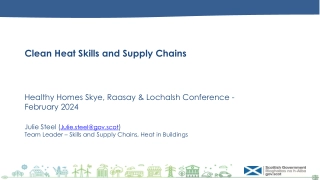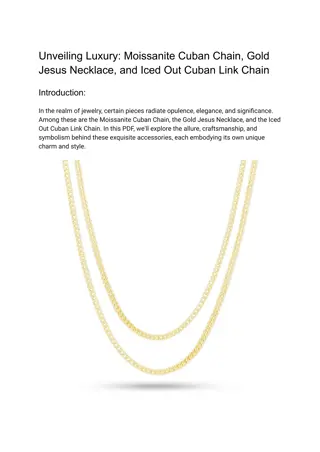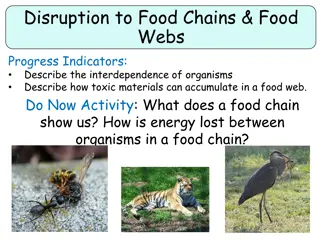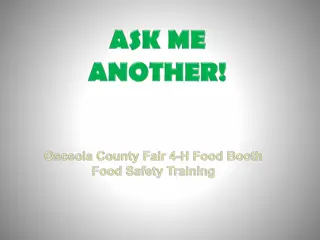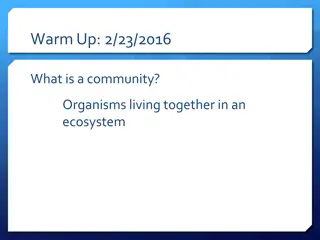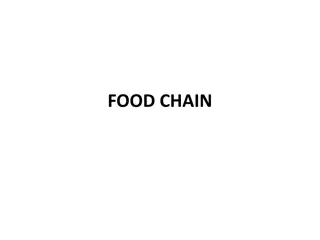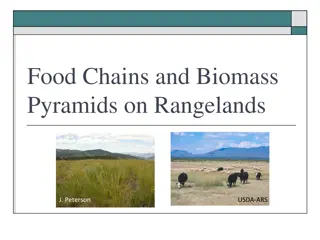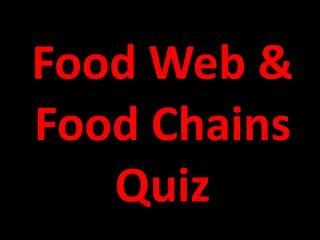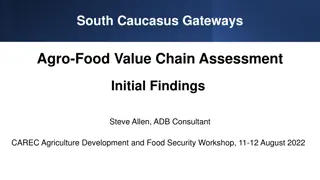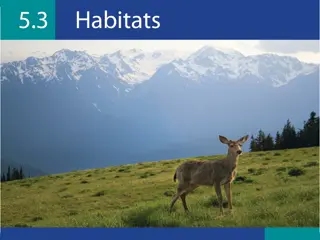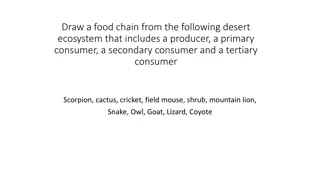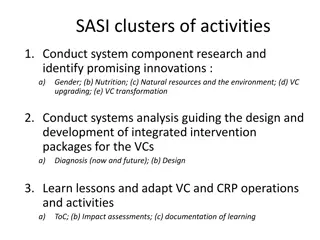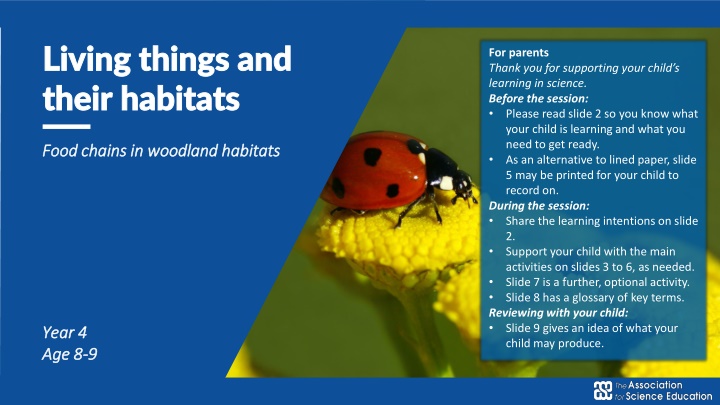
Exploring Food Chains in Woodland Habitats for Year 4 Students
Delve into the world of food chains in woodland habitats with this educational resource designed for Year 4 students and their parents. Learn about the classification of living things, the relationships between predators and prey, and the role of producers and consumers in an ecosystem. Engage in activities to draw and describe food chains, discuss how animals feed, and explore the concept of herbivores, carnivores, and omnivores. Enhance learning through interactive sessions and supplementary resources provided in this science-focused material.
Uploaded on | 0 Views
Download Presentation

Please find below an Image/Link to download the presentation.
The content on the website is provided AS IS for your information and personal use only. It may not be sold, licensed, or shared on other websites without obtaining consent from the author. If you encounter any issues during the download, it is possible that the publisher has removed the file from their server.
You are allowed to download the files provided on this website for personal or commercial use, subject to the condition that they are used lawfully. All files are the property of their respective owners.
The content on the website is provided AS IS for your information and personal use only. It may not be sold, licensed, or shared on other websites without obtaining consent from the author.
E N D
Presentation Transcript
Living things and Living things and their habitats their habitats For parents Thank you for supporting your child s learning in science. Before the session: Please read slide 2 so you know what your child is learning and what you need to get ready. As an alternative to lined paper, slide 5 may be printed for your child to record on. During the session: Share the learning intentions on slide 2. Support your child with the main activities on slides 3 to 6, as needed. Slide 7 is a further, optional activity. Slide 8 has a glossary of key terms. Reviewing with your child: Slide 9 gives an idea of what your child may produce. Food chains in woodland habitats Food chains in woodland habitats Year 4 Year 4 Age 8 Age 8- -9 9
Living things and their habitats Living things and their habitats Food chains in a woodland habitat Food chains in a woodland habitat Logo for section to sit inside roundel Activities (pages 3-6): 30 - 40 mins Use lined paper, a ruler and a pencil. Alternatively, print page 6 as a worksheet. Key Learning A food chain shows the links between different living things and where they get their energy from. Living things can be classified as producers or consumers according to their place in the food chain. A predator is an animal that feeds on other animals (its prey). Animals can be described as carnivores, herbivores or omnivores. Find out more (page 7): 30 - 60 mins You may like to explore more about predators and their prey. I can Draw food chains for woodland plants and animals. Describe the relationship between predators and their prey. 2
Explore, review, think, talk. Explore, review, think, talk . What do you already know about how animals feed? What do you already know about how animals feed? (5 minutes) (5 minutes) Logo for section to sit inside roundel Animals can be described as herbivores, carnivores or omnivores. Birds like robins, blue tits and house sparrows have a very varied diet! All animals need to eat food to survive. Talk about what you already know about the kind of food different animals eat. What is the name of an animal that only eats plants? What is the name of an animal that only eats other animals? slugs flies worms spiders What is the name of an animal that eats both plants and other animals? Robins, blue tits and house sparrows are omnivores because they eat plants and other animals. Watch this clip about birds. What kind of food do they eat? https://www.bbc.co.uk/b itesize/clips/z9nhfg8 mealworms berries nuts & seeds woodlice 3 3
Watch, read, listen Watch, read, listen Describing a food chain Describing a food chain (10 minutes) (10 minutes) Logo for section to sit inside roundel A food chain starts with energy from the Sun because plantsneed the Sun s light energy to make their own food in their leaves. Watch this clip describing a food chain. https://www.bbc.co.uk/bitesize/clips/zjshfg8 caterpillar magpie Plants are eaten by animals. These animals are then food for other animals, creating a food chain. cat The arrows in the food chain show the flow of energy. sunlight Think about these questions as you watch Where does a food chain start? Which animals are herbivores? Which animals are carnivores? leaves caterpillar cat magpie 4
Building food chains Building food chains Describe producers, consumers, predators and prey in a food chain Describe producers, consumers, predators and prey in a food chain (page 5 (page 5- -6: 30 minutes) 6: 30 minutes) Logo for section to sit inside roundel All plants make their own food. They are called producers. Animals which hunt and kill other animals to eat are called predators. Animals eat plants or other animals to survive. They are called consumers. The animals they eat are called prey. Write down a list of predators and their prey from the food chain game. Play this food chain game to identify some woodland producers and consumers. https://www.bbc.co.uk/bitesize/topics/zbnnb9q/articles/zsp hrwx predator badger prey worm 4
I can draw and label food chains for woodland animals. I can describe the relationship between predators and their prey. Draw four different food chains for woodland animals. Example: Label each living thing as producer or consumer. Write short sentences underneath to describe the predators and prey in the food chain. leaves producer caterpillar consumer bird consumer fox consumer The caterpillar is the bird s prey. The bird is a predator but it is also prey for the fox. The fox is the top predator in this food chain. Use what you have learnt and the word bank and the pictures to help you. producer consumer predator prey leaves blackberries caterpillar worm badger bird fox shrew hedgehog owl 6
Find out more about predators and their prey Find out more about predators and their prey Explore the relationship between ants, tiger beetles and parasitic wasps Explore the relationship between ants, tiger beetles and parasitic wasps (20 (20 30 minutes) 30 minutes) Logo for section to sit inside roundel Tiger beetles are predators and one of their favourite prey are ants. However, beetles can also be prey for another insect Most ants are omnivores. They like to eat plants, seeds, nectar, and even other animals. Watch this BBC clip to find out more. Make a food chain to show how the tiger beetle larva can be a predator and prey. Write a short paragraph to describe what happens. https://www.bbc.co.uk/programmes/p003xjbk Taking it further . Imagine you are Methocha, a parasitic wasp. Write a short story about how you trick a tiger beetle and what you do once you have paralysed it. 7
Glossary of terms Carnivore: A carnivore is an animal which only eats other animals. Consumer: All animals are consumers because they cannot make their own food. Food chain: A food chain shows the links between different living things and where they get their energy from. Herbivore: A herbivore is an animal which only eats plants. Omnivore: An omnivore is an animals which eats plants and other animals. Predator and Prey: A predator is an animal that feeds on other animals (its prey). Producer: Plants are producers.A food chain starts with the Sun providing energy for a plant (the producer) to make its own food. 8
Possible learning outcome for reviewing your work. In UK woodland, badgers and foxes are top carnivores as they are not eaten by other animals. The arrows in a food chain show the flow of energy. (A food chain starts with energy from the Sun because plants need the Sun s light energy to make their own food in their leaves.) Badgers and foxes are omnivores. They eat berries as well as small animals. A food chain can have just a producer and one consumer. In this case there is no predator or prey. Hedgehogs are omnivores. They eat berries, worms and insects. 9

